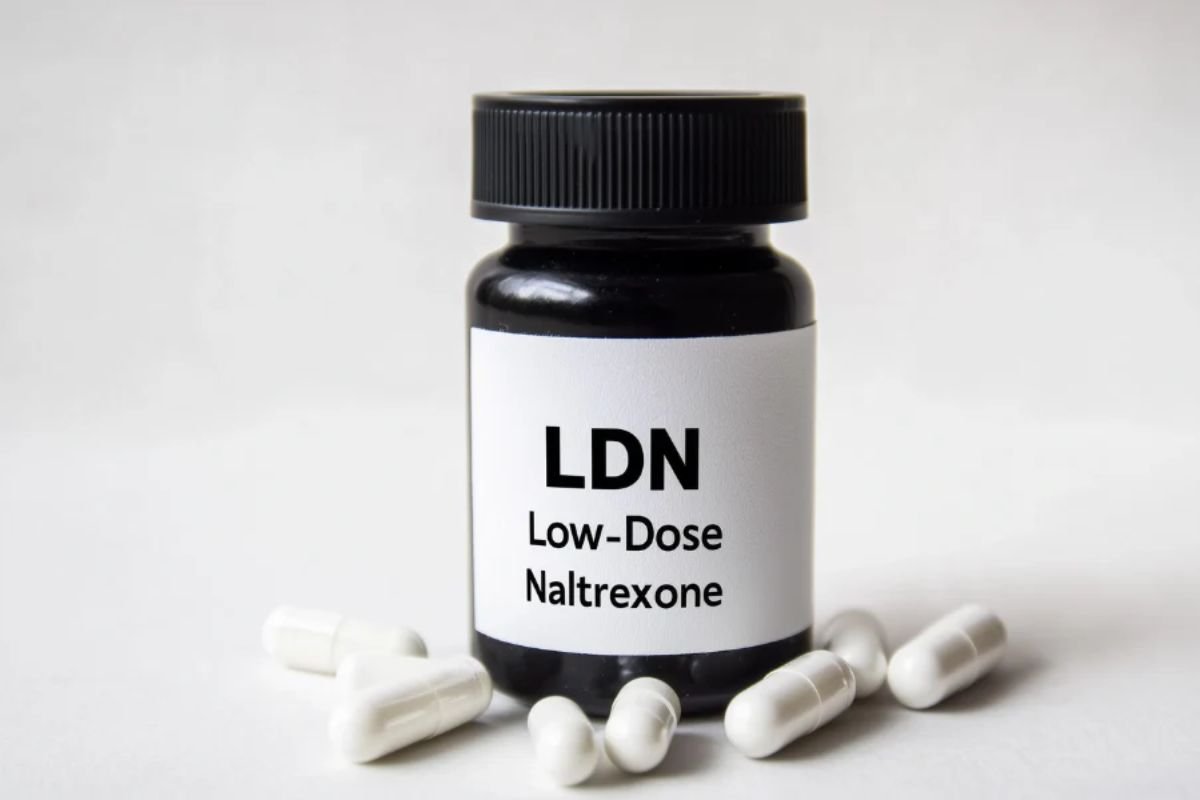What is Low Dose Naltrexone (LDN)?
Low Dose Naltrexone (LDN) is an emerging drug that is getting attention as a possible treatment for chronic ailments, including autoimmune illnesses, fibromyalgia, and MS. Initially, naltrexone was FDA-approved in higher doses in the 1980s (at least 50mg) for opioids and alcohol dependency management. Nevertheless, when taken in low doses (generally 1.5mg up to 4.5mg), it is believed to modulate the immune system and alleviate inflammation.
LDN has been indicated in individual cases and studies by many patients and researchers to relieve symptoms of chronic pain, fatigue, and neurological issues. Its off-label usage in medicine has the attention of many, and investigation hero devalued on its potential nobility and profile of effectiveness and safety is underway.
How Does LDN Work?
LDN works by temporarily blocking the brain’s opioid receptors. After a short time of activation, this provides for an increase in opiate synthesis within the body, natural painkillers, and immune modulators like endorphins and enkephalins. These chemicals are useful downregulators of the immune system, making LDN especially suitable for conditions with immune dysregulation.
Secondly, LDN suppresses microglial activation in the central nervous system, and this is supposed to explain the anti-inflammatory component. Microglial hyperactivity is proven guilty in neuroinflammatory issues that give rise to chronic pain problems, depression, and some degenerative diseases. Therefore, calming this immune response by LDN would possibly mitigate the complaints of many with such problematic inflammatory illnesses.
Side Effects of Low-Dose Naltrexone
Despite its promising benefits, some users experience side effects of Low Dose Naltrexone. Fortunately, these side effects are usually mild and transient. Commonly reported side effects include:

- Sleep Disturbances – Some individuals report vivid dreams or insomnia when first starting LDN. This effect often subsides after a few weeks as the body adjusts to the medication.
- Gastrointestinal Issues – Nausea, stomach cramps, and diarrhea have been noted in some patients, particularly during the initial phase of treatment.
- Headaches – Mild to moderate headaches may occur but generally diminish with continued use.
- Fatigue or Drowsiness – A small number of users experience temporary fatigue or drowsiness, especially when taking LDN at night.
- Increased Anxiety or Restlessness – In rare cases, individuals report heightened anxiety or restlessness, which may require dose adjustments.
Most of these side effects of Low Dose Naltrexone are temporary and resolve within a few weeks. However, if symptoms persist, it is recommended to consult a healthcare provider for guidance on dose adjustments or alternative treatment options.
Does Low-Dose Naltrexone Work for Fibromyalgia?

Several studies suggest that Low Dose Naltrexone may be a promising treatment for fibromyalgia. Its ability to reduce neuroinflammation and modulate pain perception makes it a potential alternative for individuals who do not respond well to traditional treatments. Some patients report significant improvements in pain levels, sleep quality, and overall well-being when using LDN.
A 2013 study published in Arthritis & Rheumatology found that LDN reduced fibromyalgia symptoms by approximately 30% in participants. Another study in Pain Medicine indicated that LDN could help regulate inflammatory markers associated with fibromyalgia, leading to symptom relief . While more research is needed, these findings highlight LDN’s potential as a safe and effective treatment for fibromyalgia.
Studies Show Low Dose Naltrexone Is Safe

Multiple studies have examined the long-term safety of LDN in treating chronic conditions. Research indicates that LDN is well-tolerated by most patients and does not significantly interact with other medications. However, it is important to note that individuals using opioid medications should avoid LDN, as it can interfere with opioid activity and lead to withdrawal symptoms.
Additionally, a review published in Clinical Rheumatology highlighted LDN’s immunomodulatory effects, emphasizing its potential in managing autoimmune diseases, chronic pain, and inflammatory disorders. Given the growing body of evidence supporting its safety and efficacy, LDN continues to be an area of interest in medical research.
Conclusion
Low Dose Naltrexone is an emerging treatment option for various chronic conditions, with a primary focus on those involving pain and inflammation. Some users may experience mild side effects of Low Dose Naltrexone. However, they are usually temporary and manageable. Its potential benefits for conditions like fibromyalgia, multiple sclerosis, and autoimmune diseases make it a promising alternative for patients enabled to seek non-traditional therapies.
Although far more extensive research needs to be done, existing studies imply that LDN is safe and effective for many patients. Those interested in considering alternative treatment using LDN should first discuss its possible use with their healthcare provider to see if it is suitable for treating their condition. Awareness itself and research on LDN seem to be evolving toward a level at which it will become an accepted treatment option for various chronic diseases and a step forward in enhancing their patients’ quality of life.